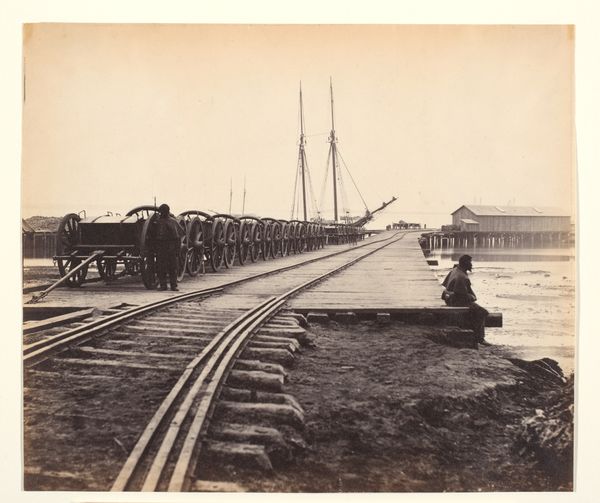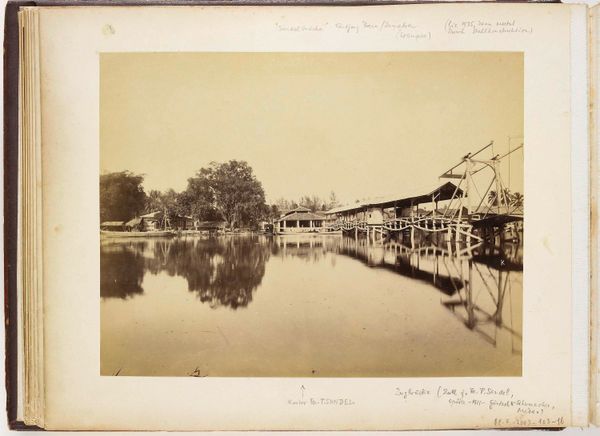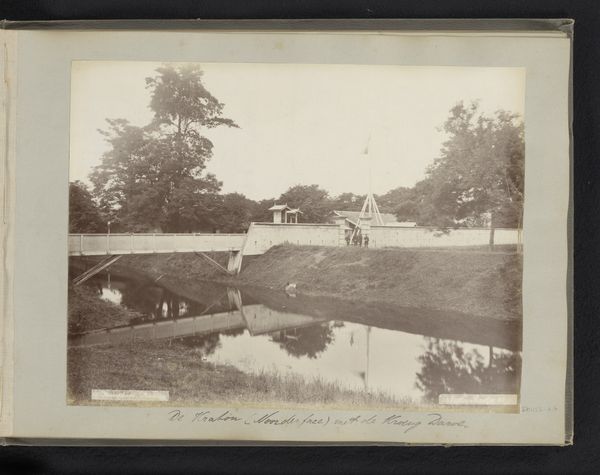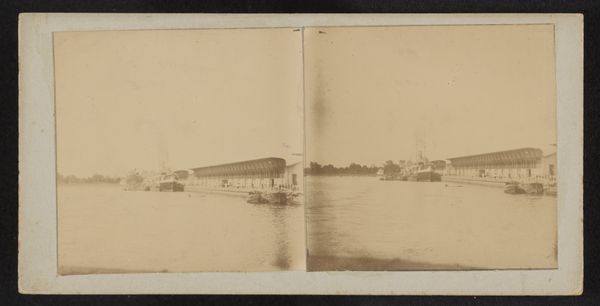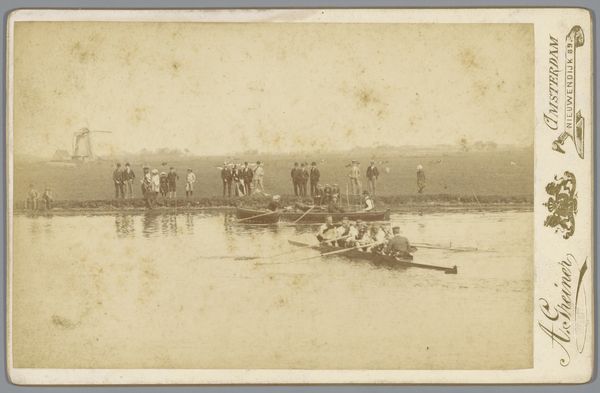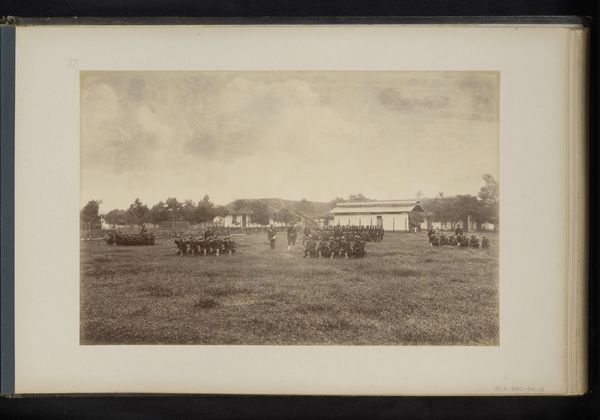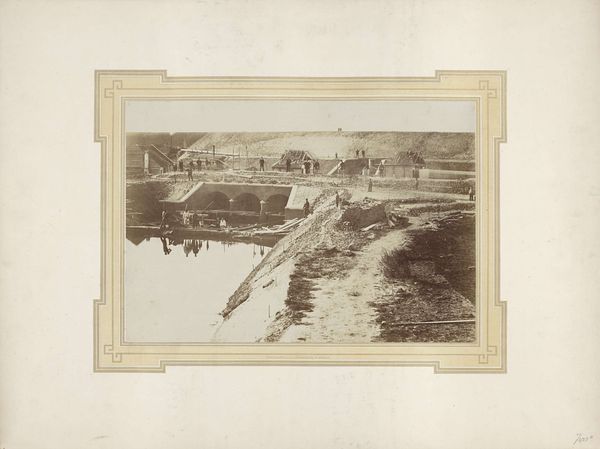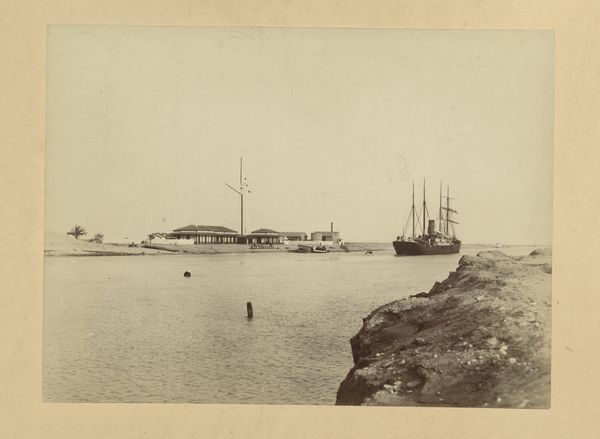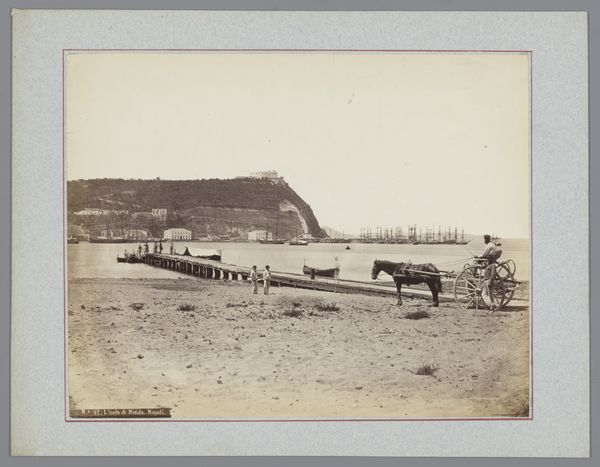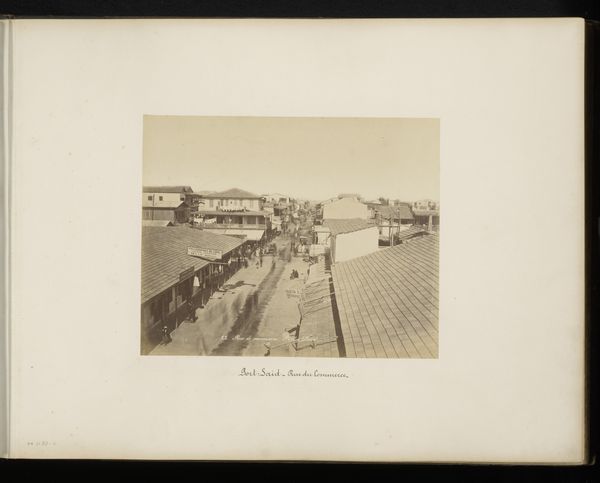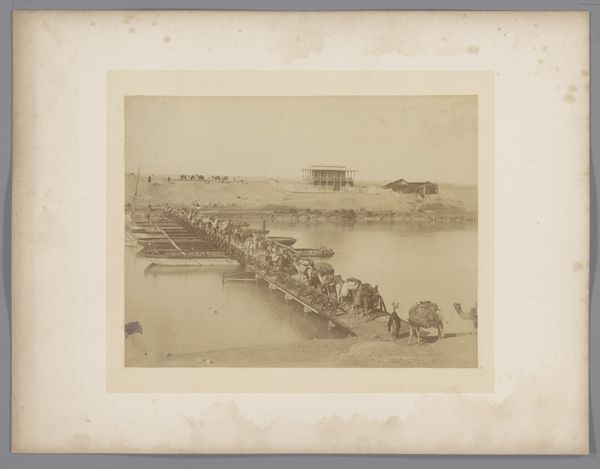
photography, gelatin-silver-print
#
dutch-golden-age
#
landscape
#
photography
#
photojournalism
#
group-portraits
#
gelatin-silver-print
Dimensions: height 222 mm, width 284 mm
Copyright: Rijks Museum: Open Domain
Editor: This photograph, taken by A. Kaulfuss between 1891 and 1894, is titled 'Militairen bij brug over de Kroeng Tjoet bij Lamjong' - it looks like a gelatin silver print. I’m struck by the starkness of the scene, this line of soldiers stretching across the bridge. How do you interpret the visual power of this piece? Curator: This photograph is not merely a depiction, it's a document embedded in the complicated history of Dutch colonialism. We see not just a landscape, but the visual assertion of military presence in what was then the Dutch East Indies. What purpose did these photographs serve, do you think, beyond simply recording a moment? Editor: Perhaps to project an image of order and control back to the Netherlands? Curator: Precisely! And who was this image meant to impress? Not just the general public back home, but potential investors, colonial administrators, and even the local population being 'managed.' It's a very constructed image, wouldn't you agree, from the composition of the bridge, symbolizing connection, to the soldiers who project an imposing image. How does the relationship between the natural environment and the military personnel impact its message? Editor: The somewhat subdued landscape acts as a backdrop, almost like the military presence is inevitable, part of the natural order...which is clearly a political statement. The lack of engagement or interaction emphasizes the detached and administrative aspects of colonialism, instead of military violence or exploitation. Curator: An astute observation. These early photographs weren't passive mirrors reflecting reality; they were active participants in shaping perceptions and legitimizing power. Considering the power of the medium itself helps to unravel these complex political undertones. Editor: I hadn't considered photography itself as an active agent! It really changes how I view historical images. Curator: Exactly! Paying attention to how museums or political institutions utilize these mediums for certain agendas sheds new light to history.
Comments
No comments
Be the first to comment and join the conversation on the ultimate creative platform.


